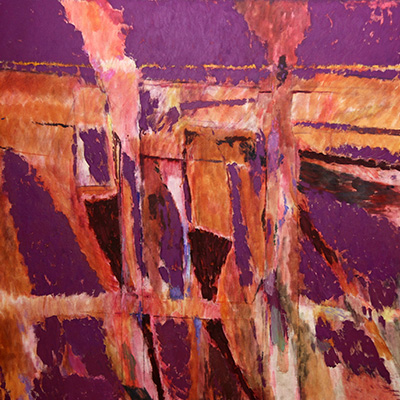
Category : MulvaneHome, MulvaneAnnouncements, MulvaneExhibits
Location: Main Level, North Gallery Abstract Expressionism was a significant twentieth-century art movement that emerged in the 1940s and 50s in New York. As such, the associated artists are often referred to as the New York School. Prominent Abstract Expressionist artists include Jackson Pollock, Willem de Kooning, Lee Krasner, Mark Rothko, Helen Frankenthaler, and Barnet Newman. These artists were not unified by a singular aesthetic but by a general move toward abstraction and by a tendency of each to paint in a unique, identifiable “signature” style. Abstract Expressionists broadly fall into two groups: gestural action painters and color field painters. The first typically employs linear flow and spontaneity. The second uses large expanses of color to evoke feeling. While Abstract Expressionism appeared in New York during the 40s and 50s, the shift in twentieth-century art toward abstraction was not confined to the city of Manhattan or those two decades. Instead, Abstract Expressionism was a global phenomenon that continues to impact artists today. The artworks on view in this exhibition were selected from the Mulvane Art Museum’s permanent collection. They demonstrate how Abstract Expressionism manifested in the art of the Midwest during the mid-twentieth century. Further, these paintings illustrate how artists from the region contributed to the advancement of abstract art during the twentieth century.
